Tom's Hardware Verdict
SilverStone managed to meet Corsair and release an equally strong SFX power supply, with 750W output power. But the SX750 Platinum isn't as good an overall performer as Corsair's SF750 Platinum.
Pros
- +
+ Full power at 47 degrees Celsius
- +
+ High power density
- +
+ High build quality
- +
+ Good enough transient response at 12V
- +
+ Highly efficient 5VSB rail
- +
+ 3x EPS and 4x PCIe connectors
- +
+ Fully modular
Cons
- -
Noisy under high loads
- -
Expected higher efficiency levels
- -
Not tight load regulation on the minor rails
- -
Low hold-up time
- -
No OTP
- -
High turn-on 5VSB voltage
- -
Long Power-On time (>150ms)
Why you can trust Tom's Hardware
The SilverStone SX750 has an extremely high power density, meeting the rival Corsair SF750, but it cannot achieve the same performance levels. In fact, the overall performance difference between the SX750 and the SF750 reaches 13%, favoring the Corsair unit. Therefore, SilverStone needs to make several changes in this PSU to increase its performance and make it competitive enough to be on our list of the best power supplies, replacing the Corsair SF750 in the best SFX PSU category.
The SilverStone SX750 is among the strongest SFX units, along with the Corsair SF750 and the Cooler Master V850 SFX Gold. However, delivering so much power out of a tiny SFX platform is tough, especially after high performance. There is no room on the small PCB for extra ripple filtering capacitors and the parts are cramped, so airflow isn't exactly optimal. In other words, you should not expect compact and high power density PSUs to be quiet under stressful conditions (e.g., high loads and increased operating temperatures).

Product Photos





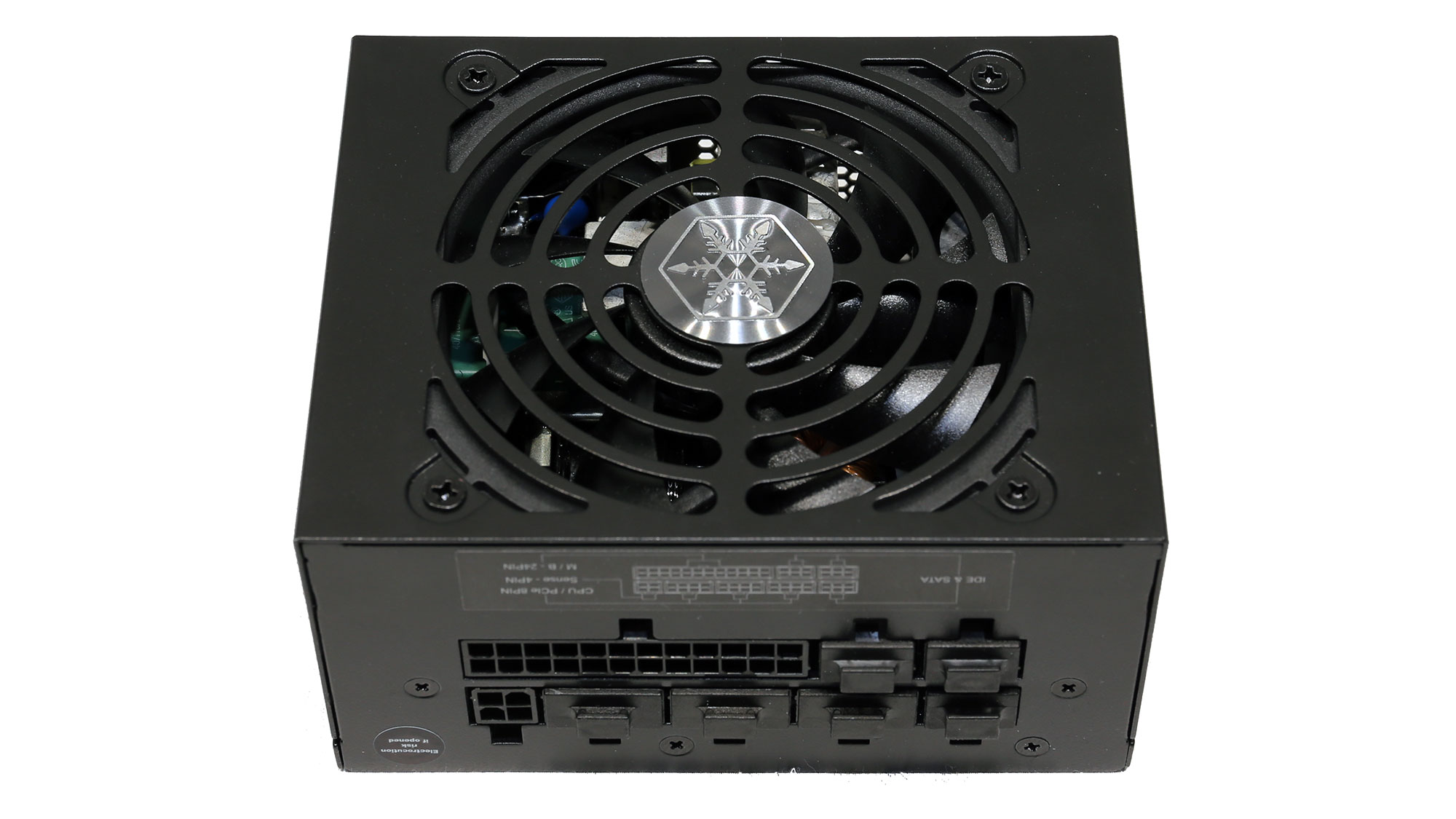




The SX750 Platinum is fully modular, providing loads of cables and connectors to deliver maximum power. The OEM is Enhance Electronics, which has vast experience in making compact and powerful platforms. At the internals, Japanese caps are exclusively used to increase reliability. The cooling fan, measuring 92mm across, uses a double ball bearing that will easily cope under high operating temperatures. Fluid dynamic bearing fans might produce lower noise output, but their life is vastly shortened under high operating temperatures (>40 degrees Celsius), which doesn't affect DBB fans.

Product Photos
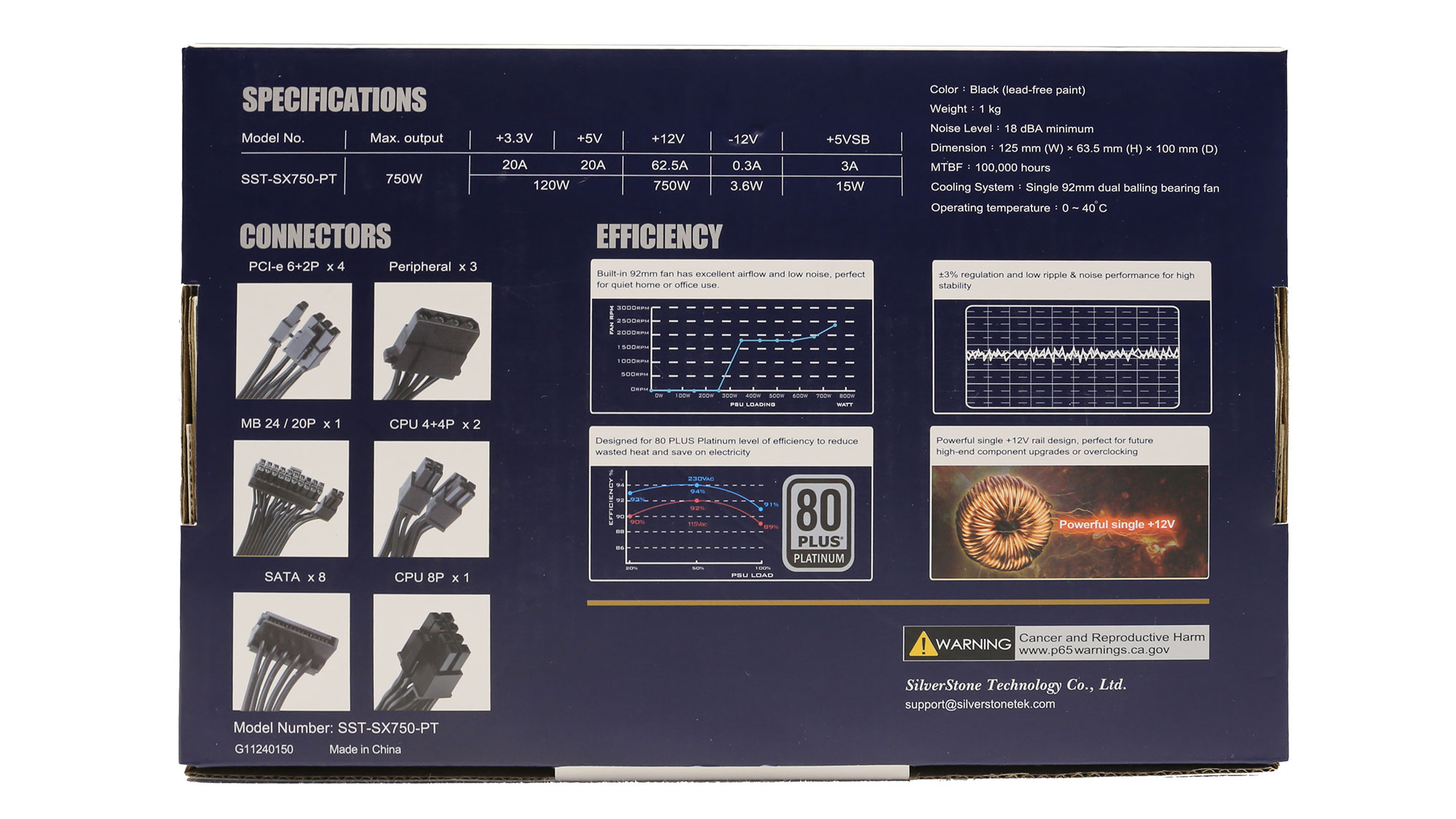




Specifications
|
Manufacturer (OEM) |
Enhance Electronics |
|
Max. DC Output |
750W |
| Efficiency | 80 PLUS Platinum, Cybenetics Platinum |
|
Noise | Cybenetics Standard+ (35-40 dB[A]) |
|
Modular |
✓ (fully) |
|
Intel C6/C7 Power State Support |
✓ |
|
Operating Temperature (Continuous Full Load) |
0 - 40°C |
|
Over Voltage Protection |
✓ |
|
Under Voltage Protection |
✓ |
|
Over Power Protection |
✓ |
|
Over Current (+12V) Protection |
✓ |
|
Over Temperature Protection |
✗ |
|
Short Circuit Protection |
✓ |
|
Surge Protection |
✓ |
|
Inrush Current Protection |
✓ |
|
Fan Failure Protection |
✗ |
|
No Load Operation |
✓ |
|
Cooling |
92mm Double Ball Bearing Fan (B0921512HB) |
|
Semi-Passive Operation |
✓ |
|
Dimensions (W x H x D) |
125 x 65 x 100mm |
|
Weight |
1 kg (2.2 lb) |
|
Form Factor |
SFX, EPS 2.92 |
|
Warranty |
5 Years |
Power Specifications
| Rail | 3.3V | 5V | 12V | 5VSB | -12V | |
|---|---|---|---|---|---|---|
| Max. Power | Amps | 20 | 20 | 62.5 | 3 | 0.3 |
| Watts | 120 | 750 | 15 | 3.6 | ||
| Total Max. Power (W) | 750 |
Cables & Connectors
| Description | Cable Count | Connector Count (Total) | Gauge | In Cable Capacitors |
|---|---|---|---|---|
| ATX connector 20+4 pin (300mm) | 1 | 1 | 16-22AWG | No |
| 4+4 pin EPS12V (410mm) | 1 | 1 | 16AWG | No |
| 8 pin EPS12V (410mm) / 4+4 pin EPS12V (150mm) | 1 | 1 / 1 | 16-18AWG | No |
| 6+2 pin PCIe (410mm+150mm) | 2 | 4 | 16-18AWG | No |
| SATA (310mm+195mm+95mm+95mm) | 2 | 8 | 18AWG | No |
| 4-pin Molex (310mm+195mm+195mm) / FDD (+100mm) | 1 | 3 / 1 | 18-22AWG | No |
| AC Power Cord (1370mm) - C13 coupler | 1 | 1 | 18AWG | - |
There are two cables with EPS connectors, and according to your needs, you will use either of them. Unfortunately, there are only three sockets for the EPS and PCIe cables, so you will have to choose between the single EPS or the double EPS cable unless you use only one PCIe cable. We advise against using the cable with two EPS connectors installed on mainboards with high power consumption.
All cables are short since this PSU is destined for small chassis, but the distance between the 4-pin Molex connectors is large at 195mm. Silverstone also provided an FDD connector, which is not required by the majority of users. It would be better if they provided an additional 4-pin Molex connector instead.

Cable Photos
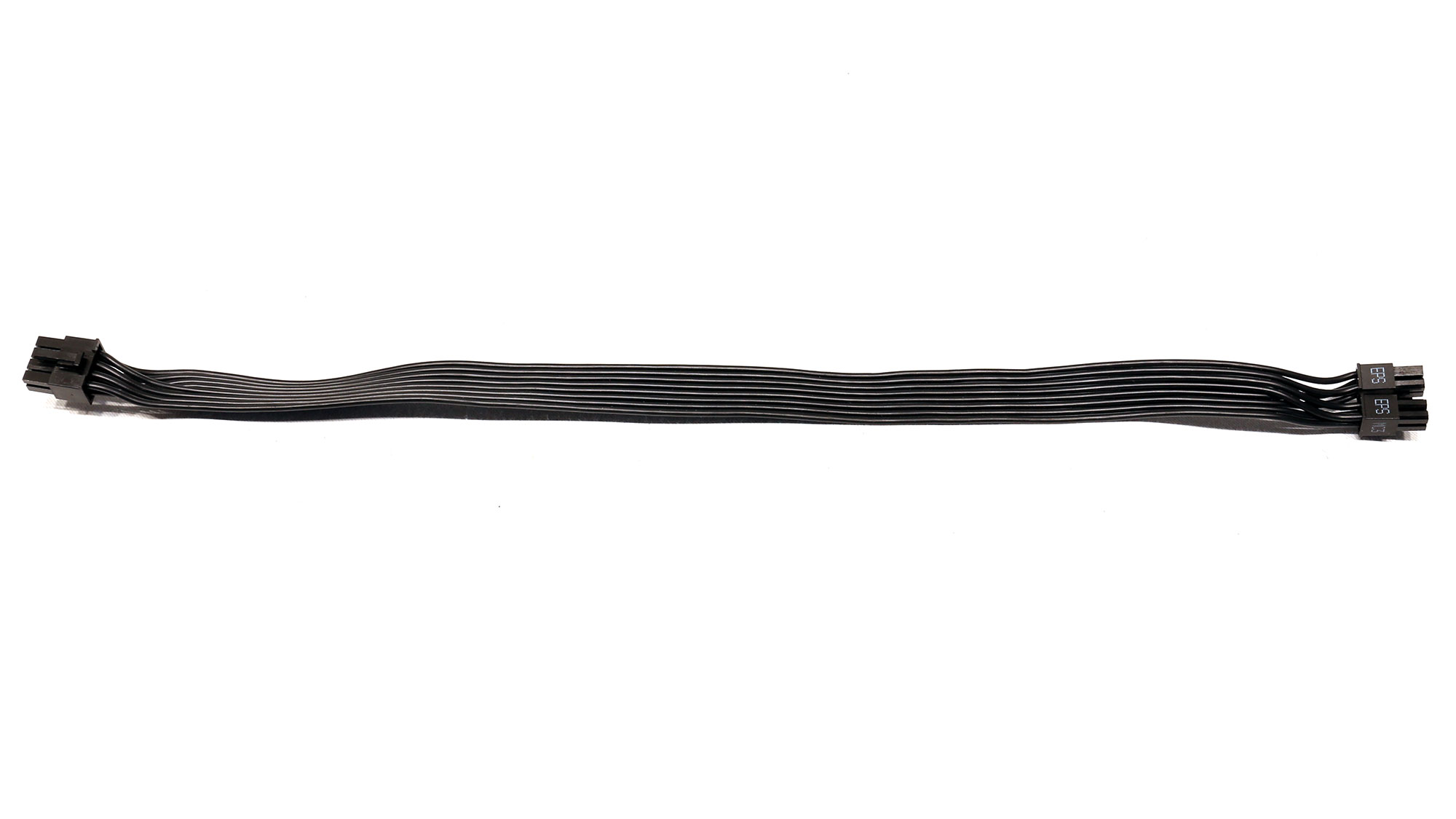



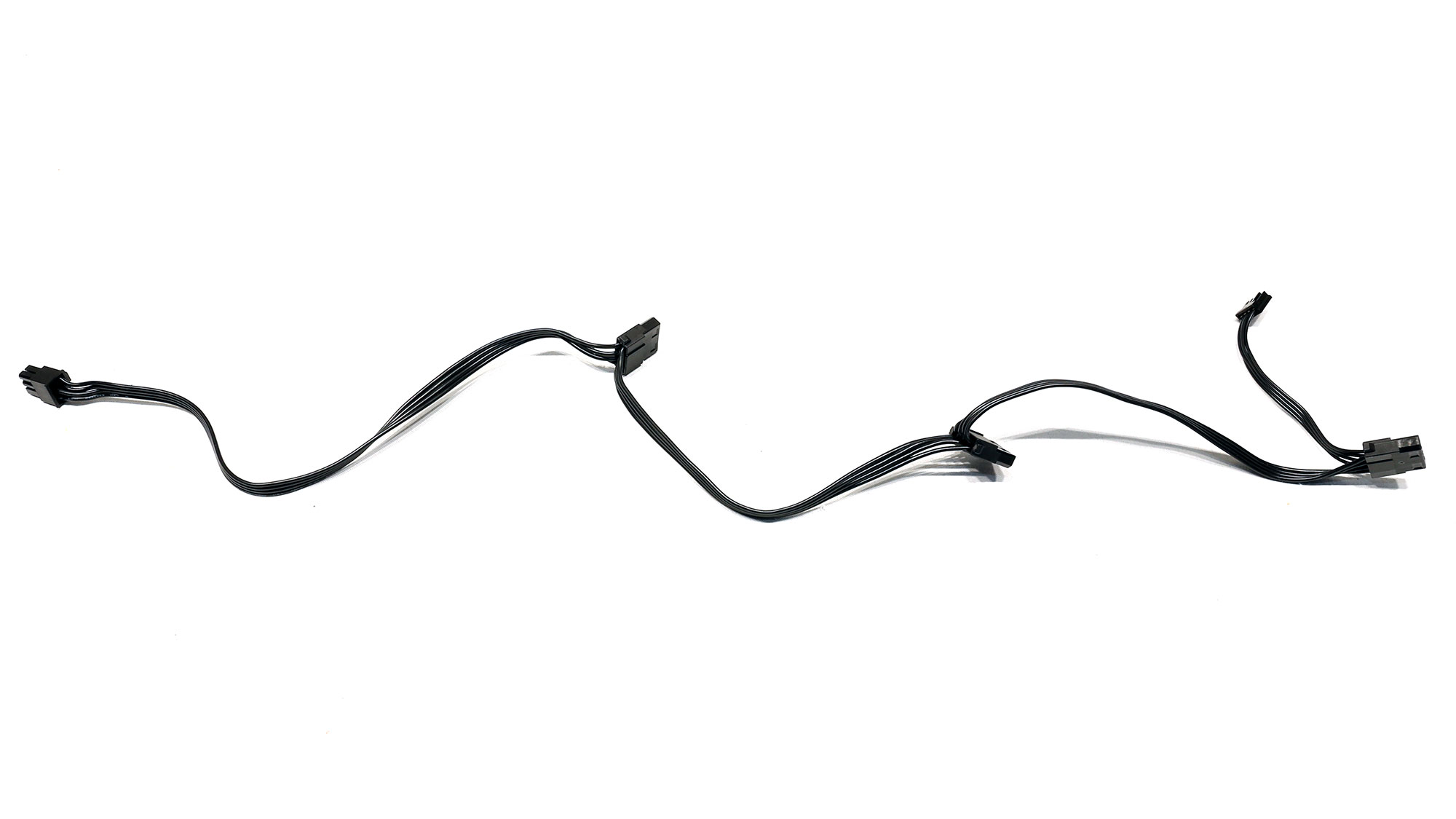

Component Analysis
We strongly encourage you to have a look at our PSUs 101 article, which provides valuable information about PSUs and their operation, allowing you to better understand the components we're about to discuss.
| General Data | - |
| Manufacturer (OEM) | Enhance Electronics |
| PCB Type | Double Sided |
| Primary Side | - |
| Transient Filter | 6x Y caps, 3x X caps, 2x CM chokes, 1x MOV |
| Inrush Protection | NTC Thermistor SCK202R0 (2 Ohm) |
| Bridge Rectifier(s) | 1x |
| APFC MOSFETs | 2x Toshiba TK39A60W (600V, 38.8A, Rds(on): 0.065Ohm) |
| APFC Boost Diode | 1x UnitedSiC UJ3D06516TS (650V, 16A @ 152°C) |
| Bulk Cap(s) | 1x Rybycon (420V, 470uF, 3,000h @ 105°C, MXK) |
| Main Switchers | 4x Oriental Semiconductor OSG55R140F (550V, 14.5A @ 100°C, Rds(on): 0.14Ohm) |
|
IC Driver |
2x Silicon Labs Si8230BD |
| APFC Controller | ATK AT6101ZS & CM03X |
| Resonant Controller | Champion CM6901T6 |
| Topology |
Primary side: APFC, Full-Bridge & LLC converter Secondary side: Synchronous Rectification & DC-DC converters |
| Secondary Side | - |
| +12V MOSFETs | 6x Infineon BSC014N04LS (40V, 125A @ 100°C, Rds(on): 1.4mOhm) |
| 5V & 3.3V | DC-DC Converters: 4x UBIQ QN3109M6N (30V, 97A @ 100°C, Rds(on): 1.5mOhm) PWM Controller(s): ANPEC APW7159C |
| Filtering Capacitors | Electrolytic: 4x Nippon Chemi-Con (4-10,000h @ 105°C, KY) Polymer: 4x FPCAP, 19x Unicon |
| Supervisor IC | Weltrend WT7527RA (OCP,OVP, UVP, SCP, PG) |
| Fan Model | Globe Fan B0921512HB (92mm, 12V, 0.45A, Double Ball Bearing Fan) |
| 5VSB Circuit | - |
| Rectifier | 1x PFR10V45CT SBR (45V, 10A) & 1x IPS ITU02N70A FET |
| Standby PWM Controller | ATK AT6002H |
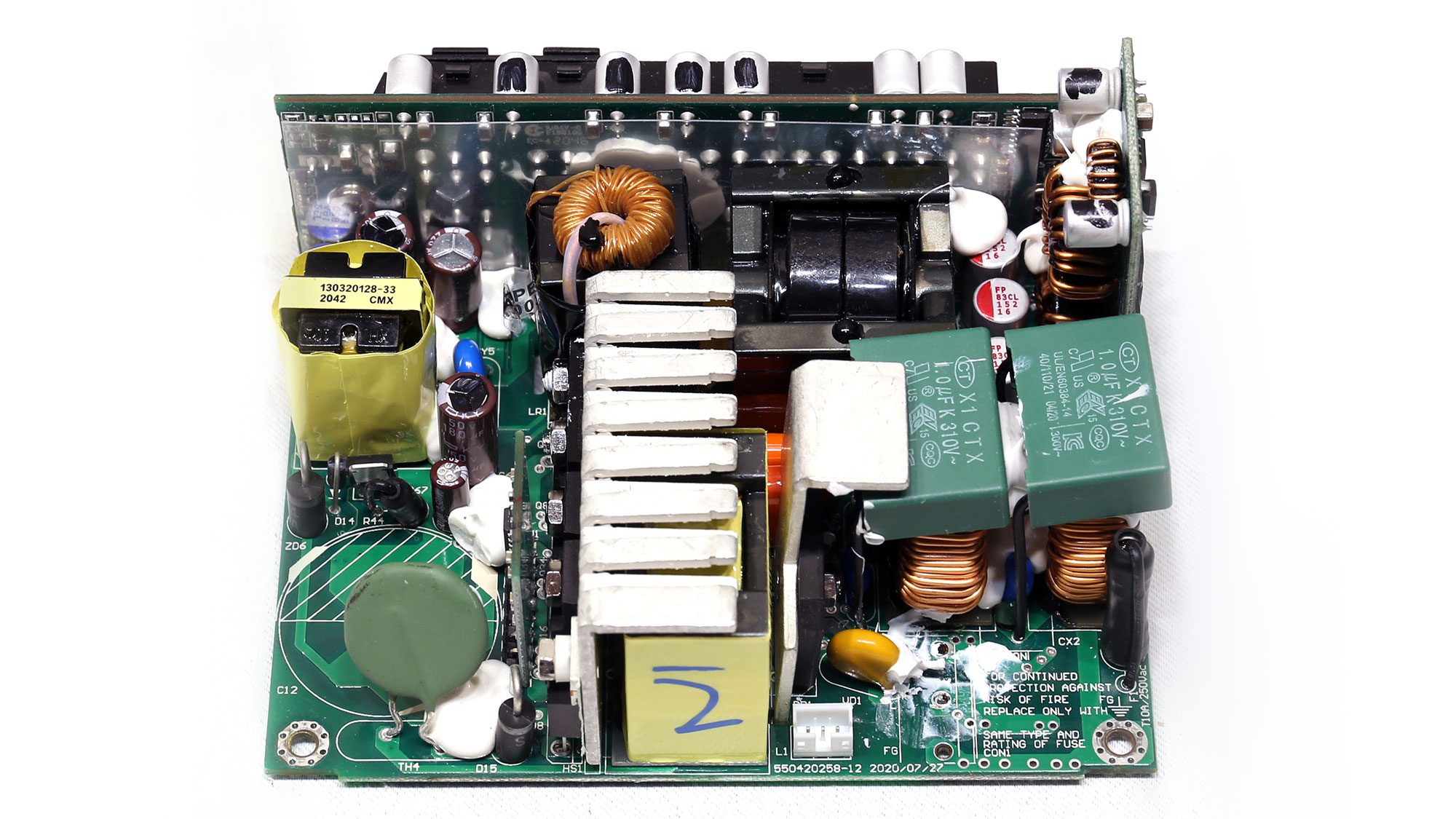
Overall Photos



The large primary heat sink with the long fins is the first indication that Enhance Electronics make this platform. Some OEMs have a distinctive heat sink design. and Enhance is one of them.
Get Tom's Hardware's best news and in-depth reviews, straight to your inbox.
As expected, the platform is densely populated. There are no heat sinks on the secondary side since the FETs that regulate the 12V rail are on the solder side of the PCB. Nevertheless, the design is modern, and Enhance did its best to find space to install all necessary parts (check in the photos above the X caps of the EMI filter, which are on top of the CM chokes).

Transient filter





The transient/EMI filter has more than the necessary components, including six Y and three X caps.
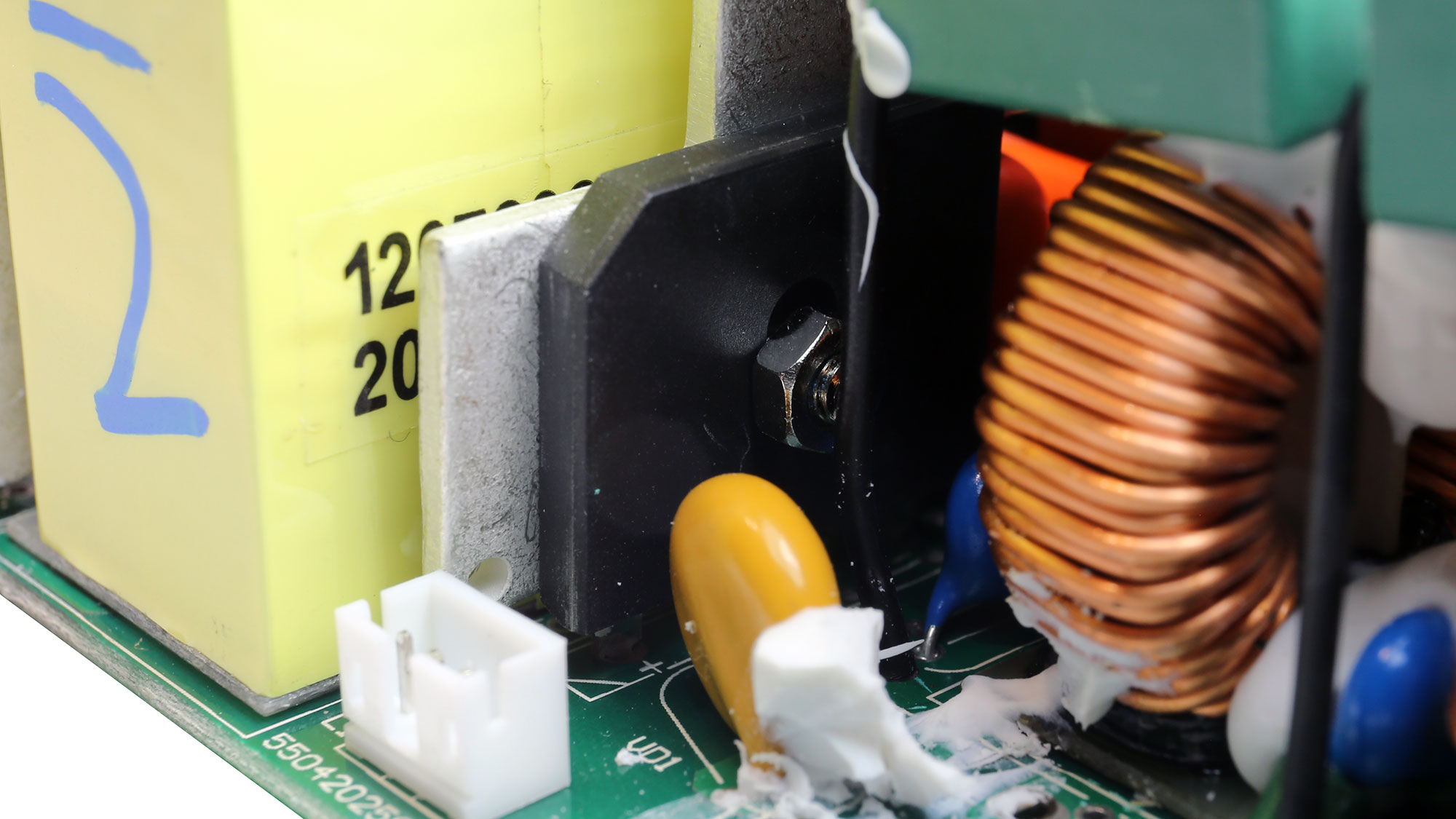
The single bridge rectifier is bolted on a dedicated heat sink, and there is no way to identify it without desoldering, which we avoided in this case.

APFC converter
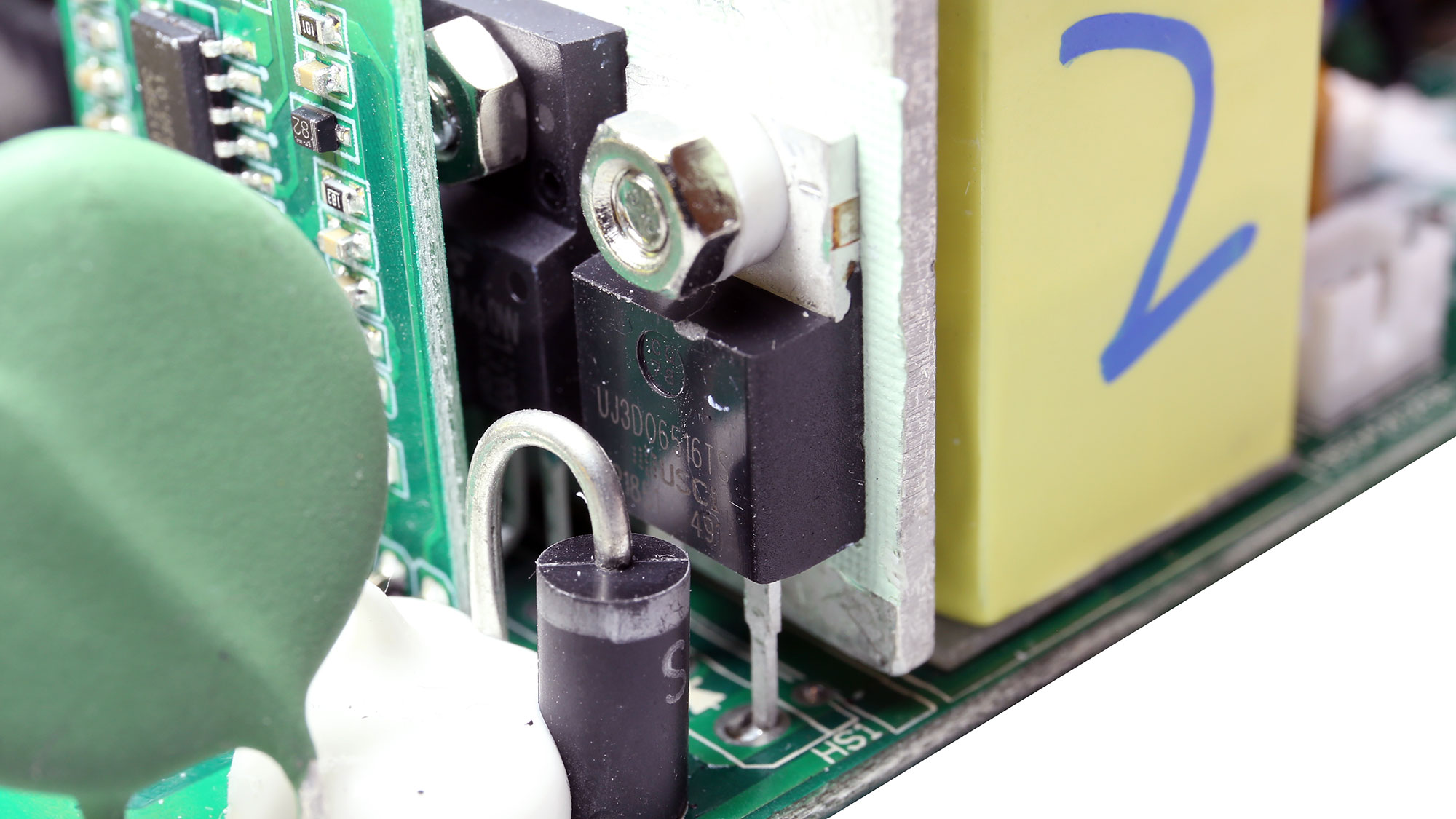


The APFC converter uses two Toshiba FETs and a single boost diode, which is powerful. However, the bulk cap is by Rubycon, and although it is of top quality, its capacity isn't large enough to allow for close to 17ms hold-up time.
The APFC controller is an ATK AT6101ZS which a CM03X IC supports for lower vampire power.

Main FETs and primary transformer

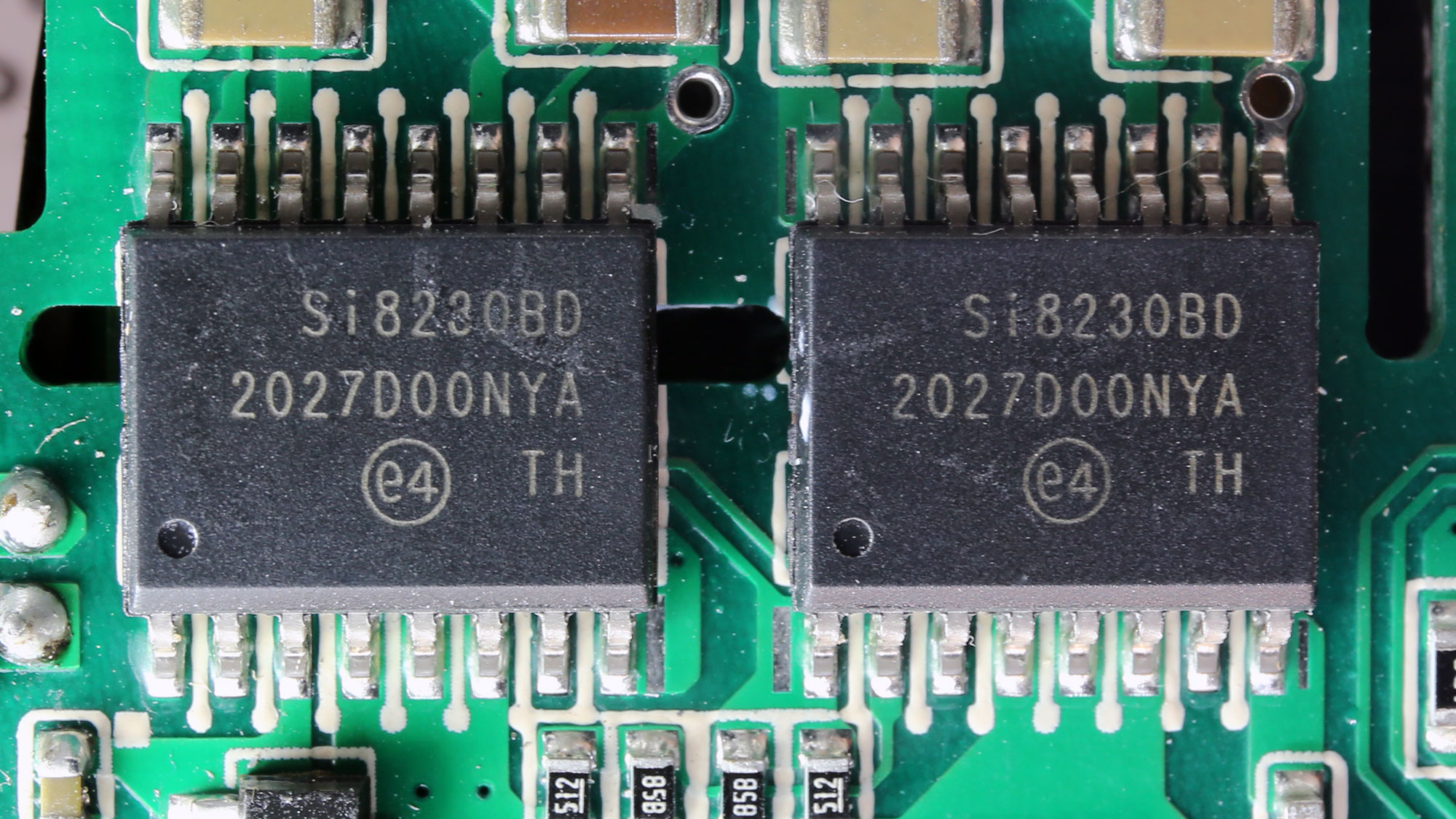
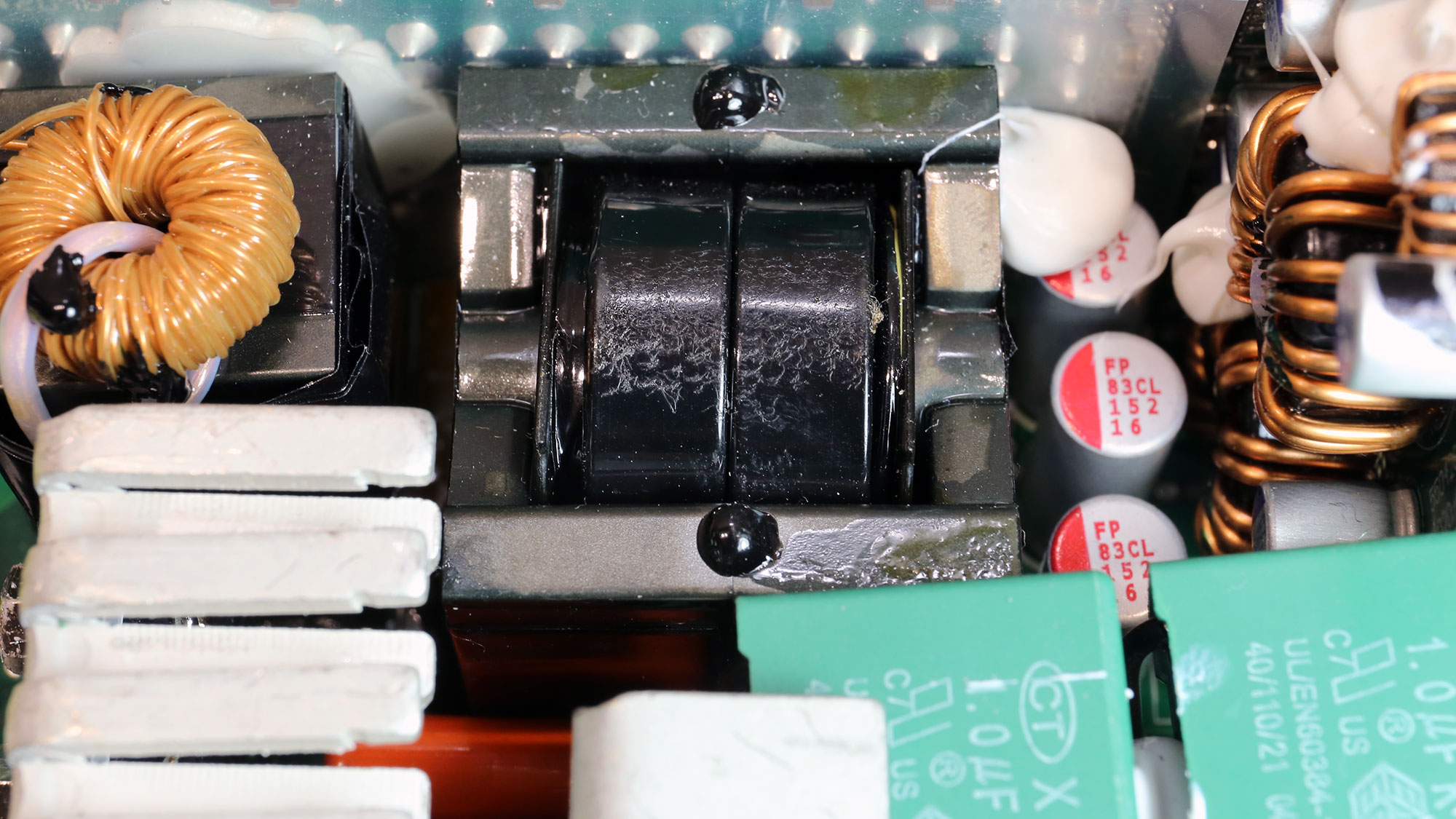


The four main FETs are installed in a full-bridge topology, and they are handled by a pair of Silicon Labs driver ICs.

12V FETs and VRMs
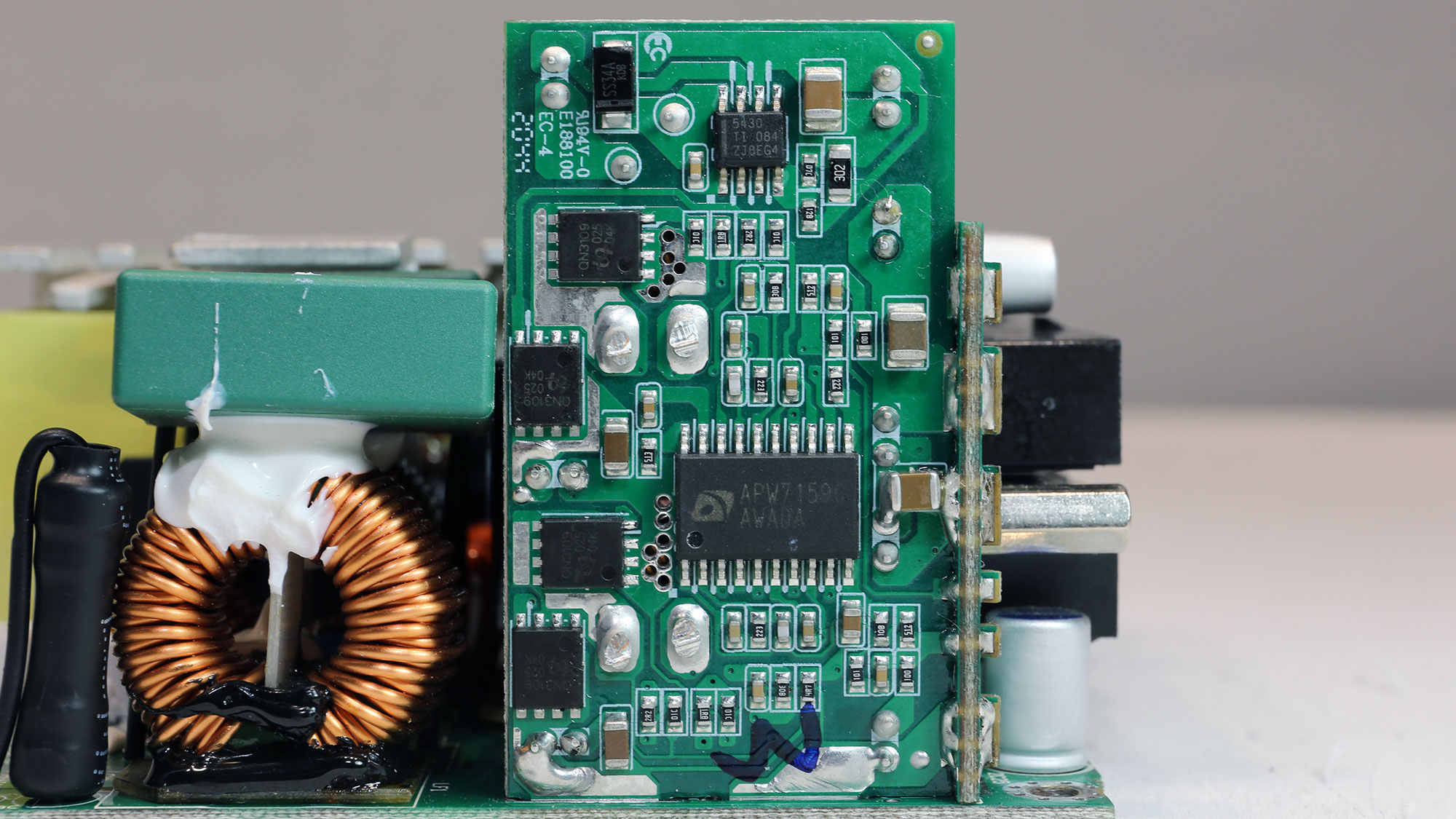

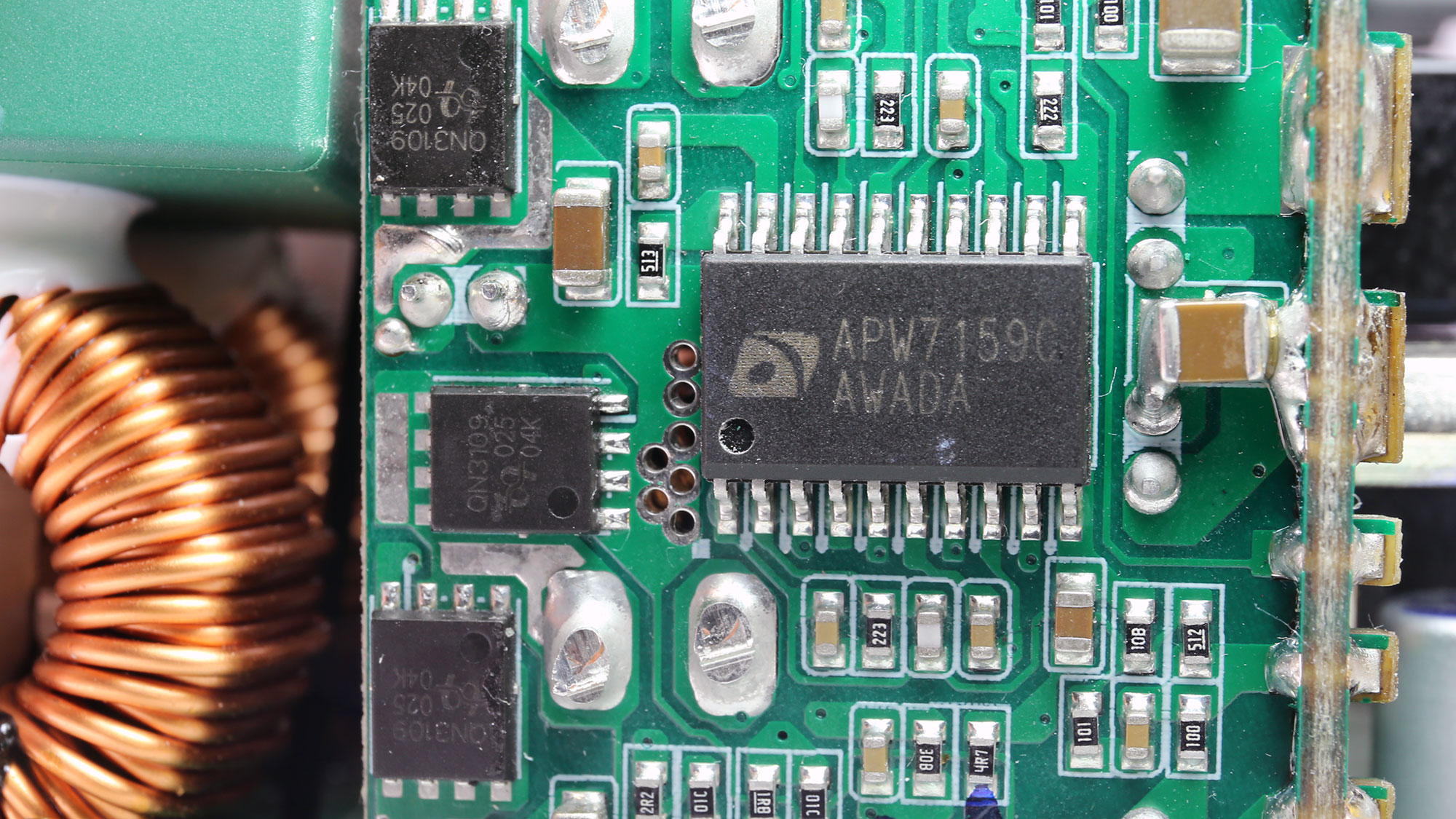
Six FETs generate the 12V rail. The minor rails, 5V and 3.3V, are regulated by a pair of DC-DC converters.

Filtering caps


There are few electrolytic caps provided by Chemi-Con, on the secondary side because there is not much space available. On the other hand, Enhance installed many polymer caps by Unicon and FPCAP.

5VSB Circuit
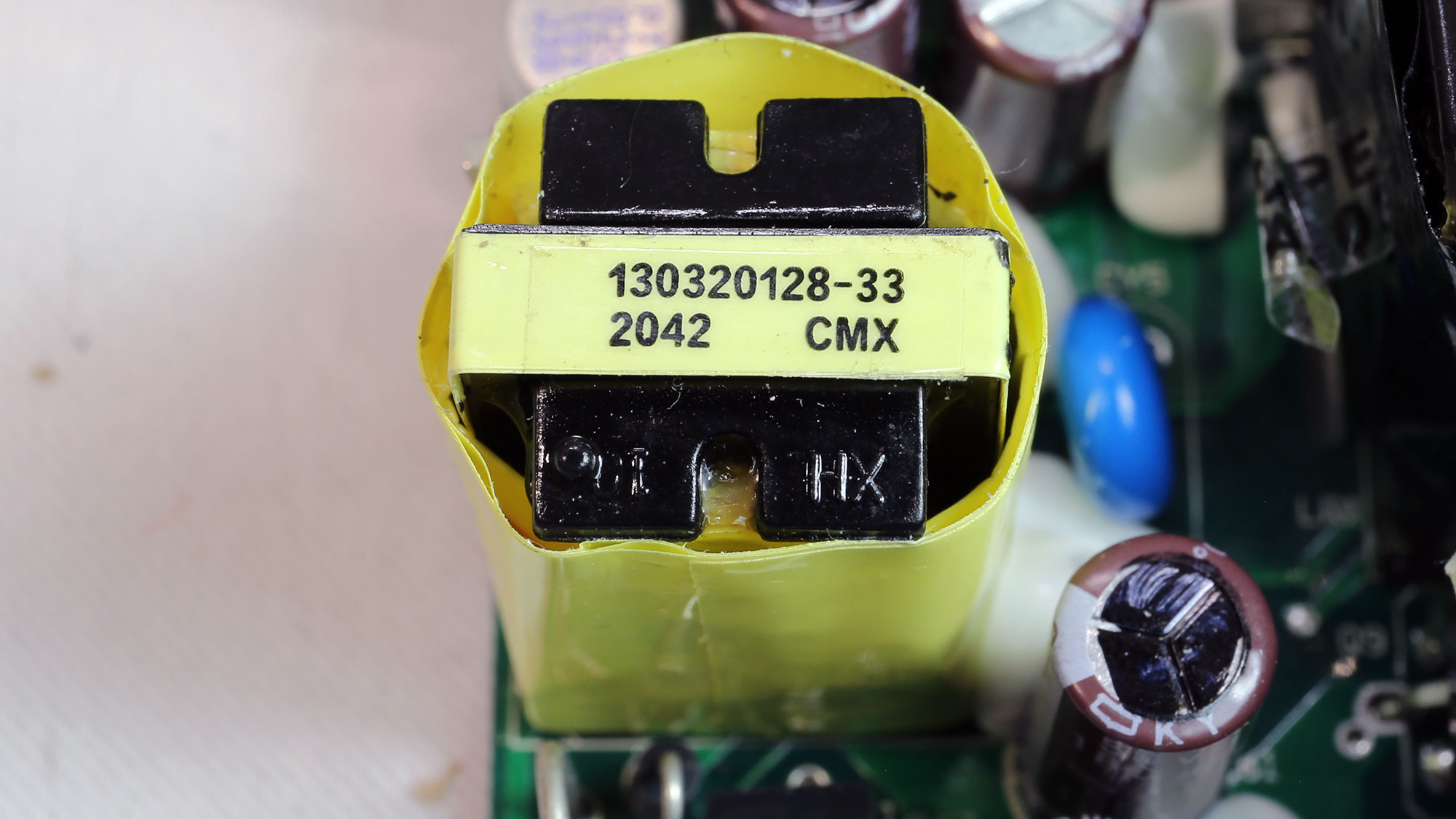

The 5VSB rail uses a PFR10V45CT SBR on its secondary side and an ITU02N70A FET on its primary side. The PWM controller is an ATK AT6002H.
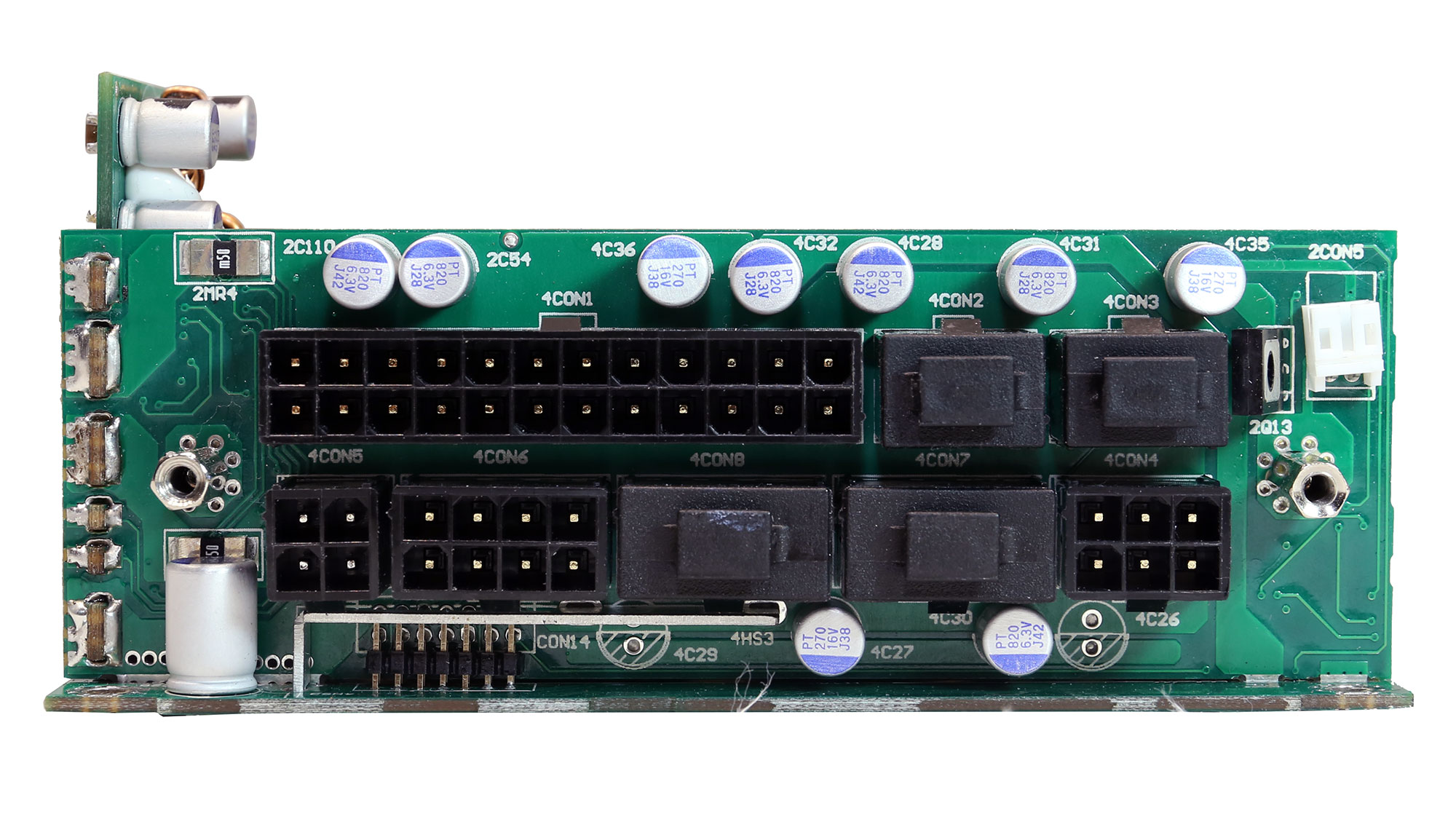
Modular board front
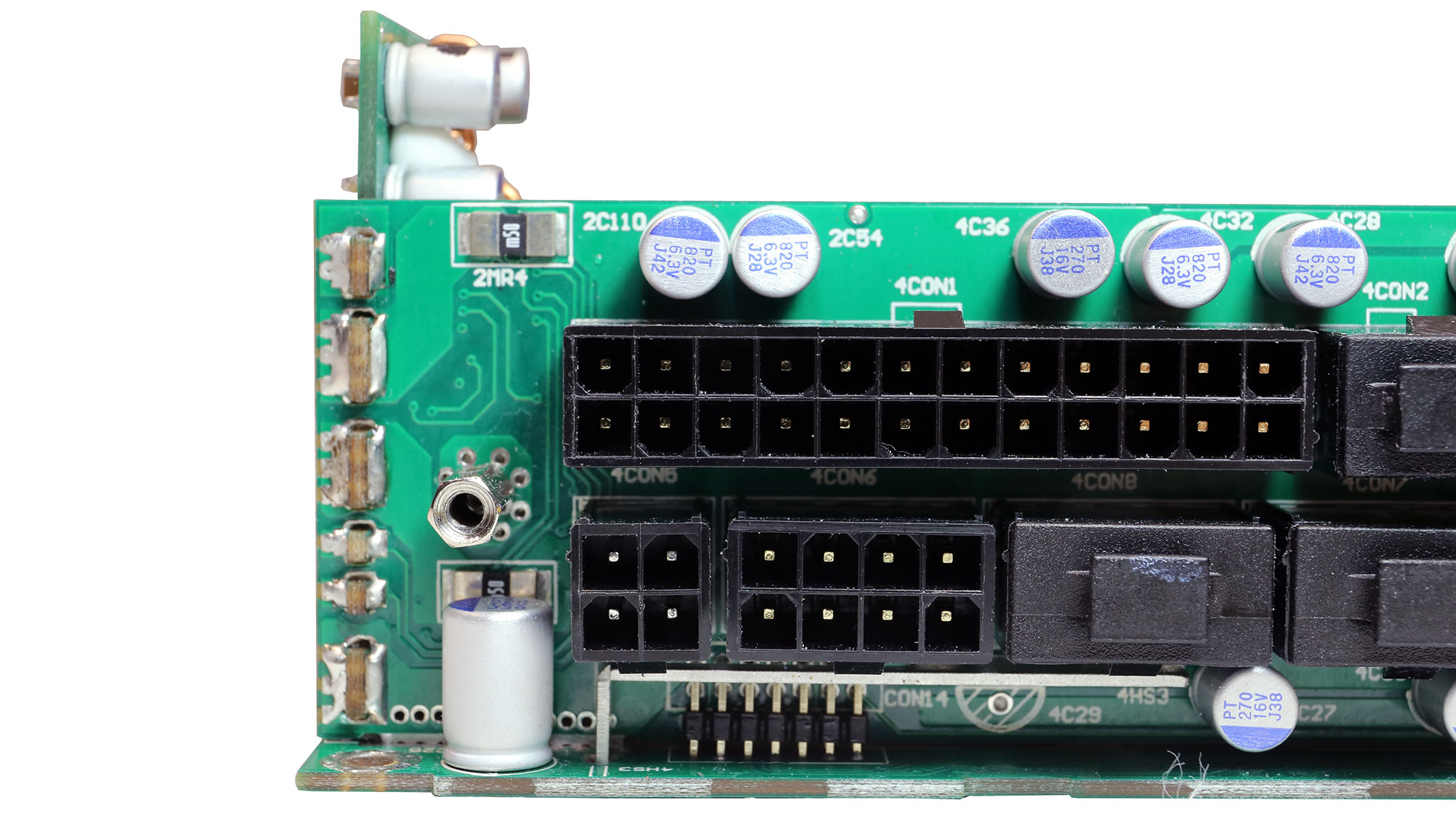

At the face of the modular board, Enhance installed several polymer caps to lower ripple.

Soldering quality



There are some solder joints with an excess amount of solder, but soldering quality is satisfactory in general.

Cooling fan
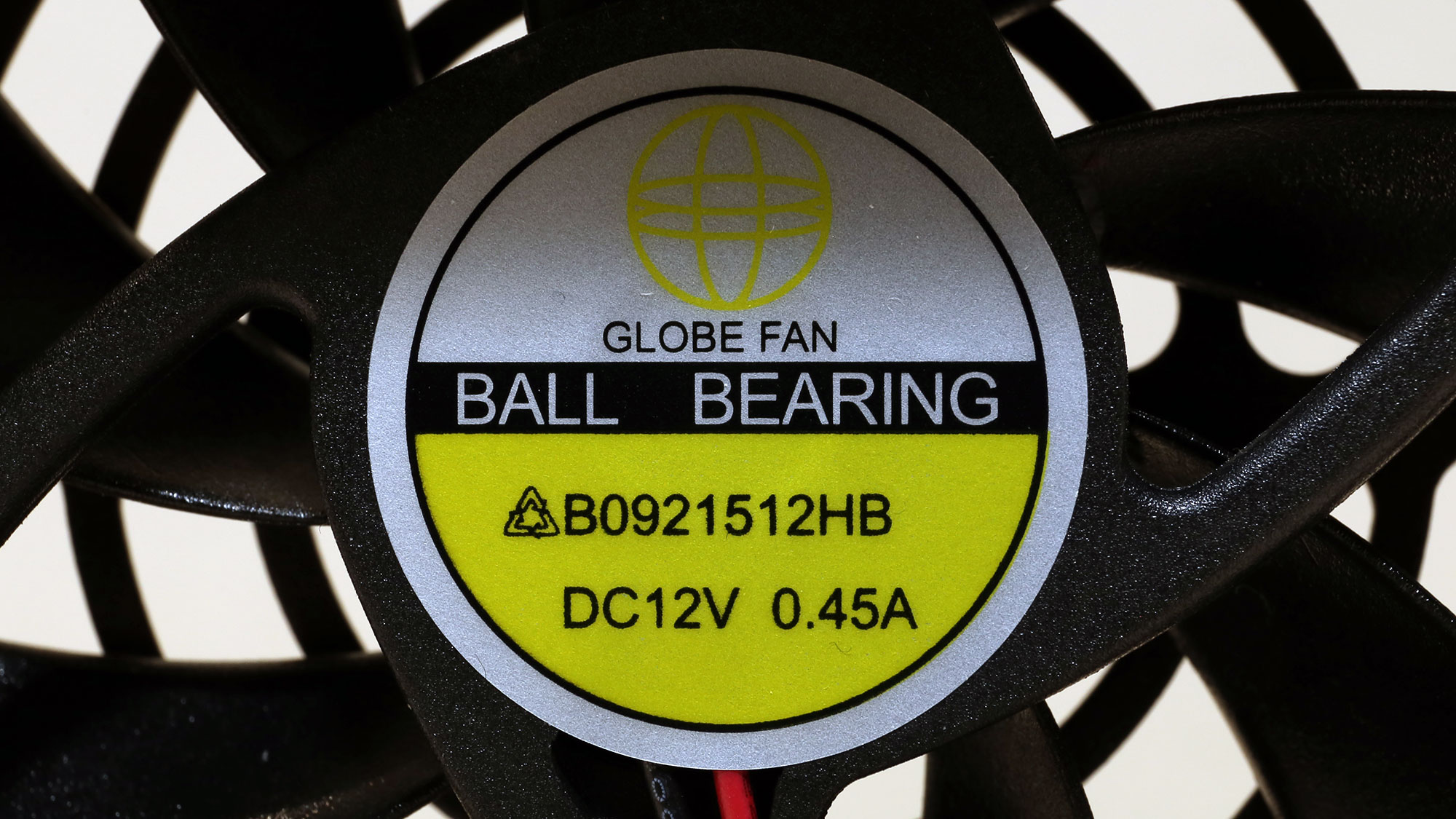
The cooling fan measures 92mm across and uses a double ball bearing. This is a quality fan, which will easily outlive the five-year warranty that supports the SX750.
MORE: Best Power Supplies
MORE: How We Test Power Supplies
MORE: All Power Supply Content
Current page: Specifications and Part Analysis
Next Page Load Regulation, Hold-Up Time, Inrush & Leakage Current, Efficiency and Noise
Aris Mpitziopoulos is a contributing editor at Tom's Hardware, covering PSUs.
-
solrac0192 Reply
This is for 1.1 Model based on the fifth image:RYANFSS said:Is this review based on v1.1 model or 1.0?
https://cdn.mos.cms.futurecdn.net/tLnQZkRbv4r546DVRoo3ub-970-80.jpg.webp -
AiteeTaitii The review (and manufacturer website) says there are four 8-pin PCIe connectors. I wish I had read the review with enough attention at the time, as it says "only three sockets for EPS and PCIe cables".Reply
I bought the PSU (and have been very happy with it earlier) but now later got "lucky" in the GPU drought with a GPU that wants three PCIe power cables. A dumb non-native speaker like me didn't realize there's a difference between socket and connector, especially when manufacturer site only uses word "connector". CPU eats one, so two are left. Sure, I can "power" all the GPU sockets when using the split-ended PCIe cable. But still I feel a bit uncomfortable reading the small print from manufacturer manual about maximum power draw and voiding warranty: "dual PCIe 8pin connectors that exceed 375W total power draw (300W from two PICe 8 pin connectors + 75W from PCIe motherboard slot)".
So far, things have worked well, GPU power draw stays just below 360W on high load. There are not many options for SFX-size PSU with so many PCIe sockets...